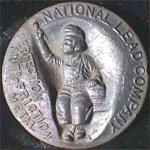History of Lead
Lead is one of the known six metals and used since the 4th millennium BC. According to archaeologists, the oldest folk who used the lead were Egyptians who used this metal for glazing utensils and extracted silver from its minerals containing silver. Then the Romans and finally the Iranians, the Chinese, the Hindus, the Russians, and the Arabs were the first people who knew and used this metal. The traces of lead and the tools left behind from those periods represents a remarkable application of this metal. Due to the Malleability properties of lead, the craftsmen could easily melt it and bring it to the various forms needed for the market during those periods.
IRAN LEAD & ZINC INDUSTRIES & MINES ASSOCIATION (I.L.Z.I.M.A)

The History of Lead
In Iran, lead has been known since the end of the 3th millennium BC, and since it is easy to melt the lead carbonates, more attention has been paid to exploitation of lead carbonate mines. In pre-Islamic periods, lead was used as a mortar for construction, damping and bridging, also to make the color, painting and pharmaceutical products. After advent of Islam, the exploitation of lead mines was due to the obtaining silver, so that in some books, these mines are called silver mines.
Prior to the Second World War, the use of lead in Iran was negligible, and the exploitation of lead mines was very rare, whereas after the war, such mines became important, and lead became a high-value product product for export.


